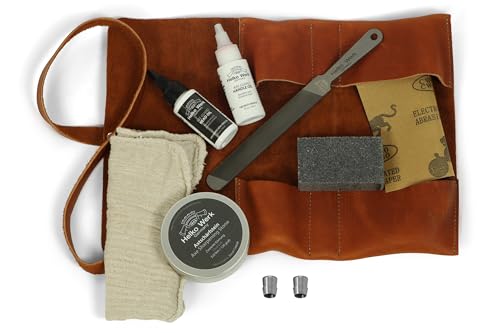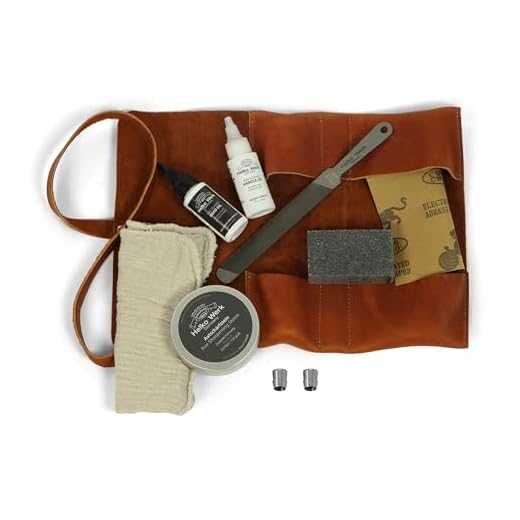
The Stone Age was a time period in human history when people used tools made from stone and other natural materials. One of the most important tools during this era was the stone axe. Stone axes were used for a variety of purposes, such as hunting, woodworking, and construction. Making a stone age axe is an interesting and educational project that allows you to experience a part of our ancient past.
Step 1: Gather the Materials
Before you can start making a stone age axe, you need to gather the necessary materials. You will need a relatively large and flat stone for the axe head, a sturdy piece of wood for the handle, and some strong cord made from natural materials, such as animal sinew or plant fibers. It is important to choose materials that would have been available during the Stone Age to make the axe as authentic as possible.
Step 2: Shape the Axe Head
Once you have gathered the materials, it’s time to shape the axe head. Use another hard stone or a hammerstone to strike the larger stone and remove any unnecessary portions. Shape the stone into a wedge-like form, leaving enough space at the top for attaching the handle. It may take some time and effort to shape the stone, so be patient and careful.
Step 3: Attach the Handle
After the axe head is shaped, it’s time to attach the handle. Find a sturdy piece of wood that is long enough to provide a good grip for your hand. Use the cord to tightly wrap and secure the handle to the top of the axe head. You can use small notches or grooves in the stone to help hold the cord in place.
Step 4: Test and Refine
Once the handle is securely attached, it’s time to test your stone age axe. Find an appropriate target, such as a tree or a log, and give it a try. Pay attention to the balance and weight of the axe as you swing it. If needed, make adjustments to the handle or the shape of the axe head to improve its performance.
Step 5: Enjoy Your Stone Age Axe
Congratulations! You have successfully made a stone age axe. Now you can use it for various purposes, just like our ancient ancestors did. Whether you use it for woodworking, survival skills, or simply for display, your stone age axe is sure to be a fascinating and unique piece of history.
Disclaimer: Making a stone age axe can be a potentially dangerous activity. Use caution and proper safety measures while working with tools and sharp objects.
Step-by-Step Guide for Crafting a Stone Age Axe
Crafting a stone age axe can be a challenging yet rewarding experience. With just a few simple tools and materials, you can create a useful tool for cutting and chopping. Follow these step-by-step instructions to create your own stone age axe:
Step 1: Gather your materials. You will need a large stone for the axe head, a smaller stone for the handle, and some strong vines or animal sinew for lashing the head to the handle.
Step 2: Find a suitable stone for the axe head. Look for one that is dense and heavy, such as granite or basalt. The stone should be large enough to fit comfortably in your hand.
Step 3: Shape the stone into an axe head. Use a harder stone or another piece of rock to chip away at the larger stone and create a pointed, wedge-shaped edge. Take your time and be careful not to chip the stone too much or make it too thin.
Step 4: Find a smaller stone for the handle. Look for one that is sturdy and comfortable to hold. It should be slightly longer than the width of your hand.
Step 5: Shape the smaller stone into a handle. Use a harder stone or another piece of rock to carve out a groove in the handle stone. This groove should be wide enough to fit the width of the axe head and deep enough to securely hold it in place.
Step 6: Attach the axe head to the handle. Use strong vines or animal sinew to lash the axe head to the handle. Wrap the lashing material tightly around the handle and through the groove in the axe head. This will ensure that the head stays securely attached while in use.
Step 7: Test your stone age axe. Give it a few practice swings to make sure it is secure and balanced. Make any necessary adjustments or repairs before using it for any serious chopping or cutting tasks.
Following these steps will allow you to create your own functional stone age axe. Remember to take your time and exercise caution when working with sharp tools. Enjoy the process of crafting and using your handmade tool!
Gathering the Necessary Materials
To make a stone age axe, you will need to gather the following materials:
1. Hard Stone
The main component of the stone age axe is a hard stone. Look for a stone that is dense and durable, such as flint or granite. These types of stones can be found in riverbeds, caves, or open fields.
2. Wooden Handle
Next, you will need a sturdy wooden handle to attach the stone to. Choose a branch or piece of wood that is straight, strong, and free from cracks. Hardwoods like oak or hickory are ideal for this purpose. Make sure the length and width of the wooden handle are suitable for your intended use.
3. Cordage
You will also need some form of cordage to secure the stone to the wooden handle. Natural materials such as animal sinew, plant fibers, or leather strips can be used. Make sure the cordage is strong and able to withstand the force applied to the axe during use.
Once you have gathered these materials, you are ready to proceed with making your stone age axe.
Selecting the Right Type of Stone
To make a stone age axe, it is crucial to select the right type of stone. The stone must be hard and dense enough to withstand the force of impacts without breaking or shattering. Additionally, it should have a fine-grained structure, which makes it easier to shape and sharpen into an effective cutting edge.
One commonly used type of stone for making stone age axes is flint. Flint is a type of sedimentary rock that is known for its hardness and ability to fracture in a conchoidal manner, meaning it breaks into sharp-edged pieces. Other suitable types of stone include chert, obsidian, and basalt, all of which possess similar qualities to flint.
When selecting a stone, it is important to choose one that is free from cracks, fractures, or natural flaws that could compromise its strength and durability. Carefully examine the stone from various angles and test its hardness by trying to scratch it with a sharp object. If it is difficult to scratch or shows no signs of wear, it is likely a suitable choice for making an axe.
The shape and size of the stone are also important considerations. Look for a stone that is large enough to create a functional axe head, but not too large that it becomes unwieldy. Ideally, the stone should have a roughly oval or rounded shape, allowing for easy gripping and handling when using the axe.
In conclusion, selecting the right type of stone is a crucial first step in making a stone age axe. Choose a hard and dense stone with a fine-grained structure, free from cracks or flaws. Flint, chert, obsidian, and basalt are popular choices. Remember to consider the shape and size of the stone to ensure a well-balanced and practical axe.
Shaping the Axe Head
Once you have selected a suitable stone, it is time to shape the axe head. This process requires patience and precision, as the quality of the final product will largely depend on the accuracy of your work.
Gathering the Necessary Tools
Before you begin shaping the axe head, you will need several tools:
- Hammerstone: A large, heavy stone used to strike the axe head and remove material.
- Abrading Stone: A smaller stone with a rough surface used to remove smaller bits of material.
- Ochre or Clay: These materials can be used to mark where you want to remove material and ensure a more accurate shape.
- Protective Gear: It is important to wear gloves and eye protection to prevent injuries.
Shaping Process
To shape the axe head, follow these steps:
- Marking: Use the ochre or clay to mark the areas you want to remove on the stone. This will serve as a guide during the shaping process.
- Flaking: Use the hammerstone to strike the stone at the marked areas, creating flakes and removing material. Be sure to strike the stone at a sharp angle to achieve better results.
- Thinning: Once the basic shape of the axe head is formed, use the abrading stone to further thin and refine the edges. This will make the axe head more efficient for cutting and chopping.
- Sharpening: Finally, use the abrading stone to sharpen one edge of the axe head. This will make it suitable for various tasks.
Remember to take breaks during the shaping process to avoid fatigue and maintain accuracy. It may take multiple sessions to achieve the desired shape and sharpness of the axe head.
By following these instructions and putting in the necessary effort, you will have a functional stone age axe head that can be attached to a handle for use in various tasks.
Attaching the Handle
Once you have selected a suitable stone and shaped it into the desired axehead form, it is time to attach the handle. The handle will provide the necessary grip and leverage for effectively using the stone age axe.
Materials:
Before you begin attaching the handle, gather the following materials:
| 1 | Wooden handle |
| 2 | Sinew or strong cordage |
Instructions:
Follow these steps to attach the handle to your stone age axe:
- Position the wooden handle against the axehead, ensuring that it is aligned with the center of the axehead and parallel to the blade.
- Secure the handle to the axehead by tightly binding it with sinew or strong cordage. Start at the top of the handle and wrap the cordage around the handle and axehead at least three times.
- Continue wrapping the cordage down the handle, creating a tight and secure attachment. Ensure that the cordage is evenly spaced and tightly wound.
- Once you reach the end of the handle, tie a secure knot to secure the cordage in place. Trim any excess cordage.
- Test the attachment by gently pulling and twisting the handle. It should be secure and not move or wiggle.
With the handle securely attached, your stone age axe is now ready to be used for various tasks such as cutting, chopping, and shaping wood. Remember to always handle the axe with care and caution.







